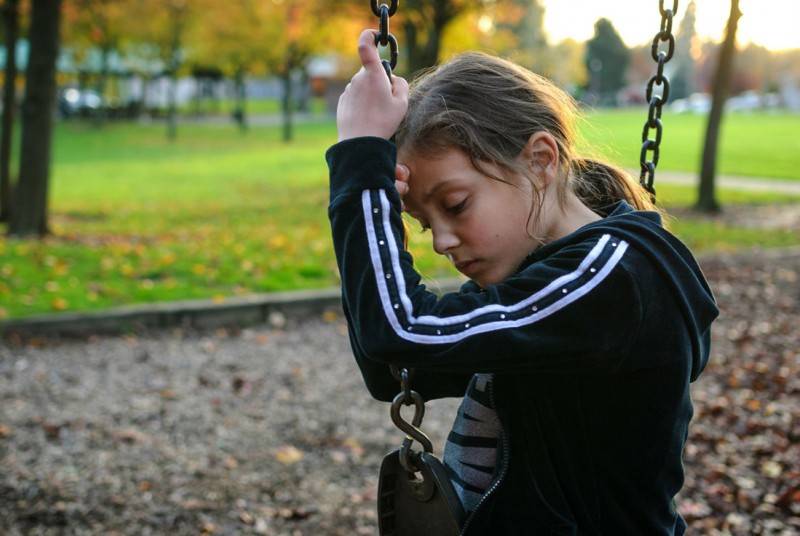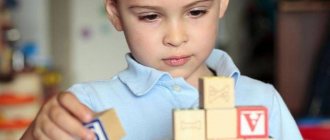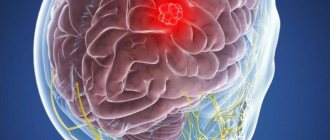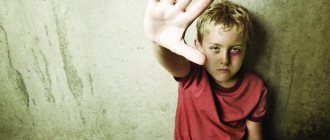Diagnosis of autistic personality disorder (Asperger syndrome)
To identify classic Kanner autism, a number of techniques are used, developed and tested mainly in foreign countries and used in scientific and experimental research.
Diagnostic methods:
- ADOS, Diagnostic Observational Score;
- ABC Behavioral Inventory;
- ADI-R, Adapted Diagnostic Interview;
- RDA CARS rating scale.
- ADOS-G Observation Scale - General Version.
When making a diagnosis in this case, medical history data, the results of dynamic observation of the child, and compliance of the manifestations of the disease with the main diagnostic signs are used:
- Qualitative pathologies of social interaction are the inability to establish social connections with others, the inability to model behavior in accordance with the social situation.
- Qualitative communication anomalies - difficulties in establishing emotional contact and lack of spontaneous speech, inability to enter into dialogue and maintain a conversation, difficulties in differentiating living objects and inanimate objects.
- Repetitive behavior, stereotypies - the child is absorbed in monotonous interests and hobbies, committed to specific behavioral rituals.
The classic syndrome of this disease is characterized by the manifestation of the clinical picture of the pathology at an early age - up to 3 years. With age, additional symptoms appear:
- psychopathological phenomena - such as fears and phobias, sometimes inexplicable and illogical;
- pronounced aggression and self-aggression;
- disturbances in the process of sleep and eating;
- excessive excitability.
Asperger's syndrome is characterized by general disharmony in development and is distinguished by the relative preservation of social function compared to classic autism. As a rule, impairments in Asperger's syndrome appear by preschool age.
Children are distinguished by specific difficulties in socialization, inhibited motor skills and stereotypical speech, and are prone to monotonous behavior, as well as the formation of highly specialized and often very deep interests.
When affected by Asperger's syndrome, early speech development is characteristic - the child often begins to speak before mastering the skill of walking.
However, despite the rich vocabulary, speech is spontaneous, stereotyped, and in some cases there is a tendency towards original word formation.
Intellectual development usually corresponds to the norm, but at the same time, there is an insufficient level of abstract thinking and poor concentration. The patient most clearly displays disorders of social behavior: inability to express his own feelings, lack of understanding of the emotional manifestations of others, difficulties in communicating with peers.
To determine Asperger's syndrome, observation methods, interviews with parents and teachers, and neuropsychological tests are widely used. The World Health Organization has developed diagnostic criteria for this disorder, which make it possible to determine the patient's ability for various types of social interaction.
The earliest signs of the disease
Typically, the first signs of autism are detected by the age of 2 years. Until this age, any deviations from the norm can smooth out and change for the better. But at 2 years old, the baby should have the simplest skills and understand the speech of an adult. This can be judged by his responses.
Let's try to note all the deviations in the baby's behavior that should alert parents:
- The child does not want to look you in the eyes.
- When talking about himself, he uses the 2nd or 3rd person.
- Constantly repeats the same words.
- He began to speak, but there was a gradual loss of speech.
- Mooing noted.
- Lack of interest in games.
- Alienation from peers.
- Ignoring parents.
- Constantly shakes his head and sways.
- Stands on his toes.
- He chews his fingers and hands.
- Aggressive and hysterical.
- Hit himself in the face.
- Strangers make him afraid.
- He is afraid of sounds and shudders from them.
It should be noted that if you notice some of these signs in your child, this does not necessarily mean autism.
But still, pay attention to the child and show him to a specialist
Many parents are interested in how to determine autism in their child themselves. There is a small diagnostic test based on three questions:
- Does your child prefer to look at one point, even if you are trying to show him something interesting?
- Does your baby point to an object not with the aim of receiving it, but in order to share interest in it with you?
- Does he like to play with toys, repeating gestures and cues from adults?
If you answer no to all three questions, then this is a serious reason for suspicion. If you answered yes, then most likely you are dealing with a normal delay in speech development, but not with autism. There is also an American practice of identifying autism in children. In the United States, such testing for autism is carried out up to 15 years of age. It's called the Autism Screening for Toddlers.
First part of the test.
- Does your baby like to sit on your lap or be held?
- How passionate is he about games?
- Does he come into contact with other children?
- Is there an imitation of actions in the game?
- Does he point at an object with his index finger?
- Does he bring any item to show his parents?
Second part of the test.
- Point the child to the object with your index finger and carefully watch his reaction. The baby's gaze should not stop at your finger. The child must look at the object.
- Observe whether your baby looks you in the eye.
- Ask your child to prepare tea for you in a toy bowl. How much interest this activity aroused in him.
- Give your child some blocks and ask him to build a tower.
If you get a negative result on most tasks, then the level of autism is quite high.
There are a number of interesting picture tests.
Diagnostics to determine the type of autism
Primary diagnosis of infants will be based on observations of the child's behavior. If parents notice that the baby has one or more of the signs listed below, this is a signal that it is necessary to seek advice from a psychotherapist:
- The child focuses on various objects and can look at them for a long time, but at the same time cannot focus his gaze on the mother’s eyes.
- The baby's gaze seems empty and aimless.
- The child is not drawn to his parents, he has no desire to be in close contact with relatives.
- The baby is characterized by repetitive movements of the same type.
- The child begins to hold his head independently much later, sits down for the first time, and muscle tone disorders are visible.
- The toddler reacts sharply to various sounds and bright light.
- The child does not like being held.
- Atypical attitude towards mother. The child is either too attached to her and cannot part with her even for a second, or treats her without any emotions.
- Children are not interested in toys; for their games they may use objects not intended for this purpose.
- The child does not try to imitate what he sees or copy sounds.
- Diagnosis of Asperger's. To confirm this diagnosis, the following methods can be used:
- observation method;
- survey of relatives and friends, as well as the kindergarten teacher;
- conducting neuropsychological tests.
- Diagnosis of Kanner. To confirm this diagnosis, the following diagnostic methods are used:
- ADOS special observation scale;
- ABS - Behavioral Characteristics Questionnaire;
- ADI-R - adapted questionnaire;
- RDA CARS - rating scale;
- The ADOS-G is a scale based on personal observations.
- Diagnosis of Rett. To diagnose this type of disease, the characteristic signs are checked:
- periodic apnea, even while awake;
- seizures accompanied by convulsions;
- foot hypotrophy;
- When performing an electroencephalogram, a temporary slowdown in the rhythm is detected, and a slow background mode is characteristic.
- Atypical autism is characterized by severe underdevelopment of cognitive abilities, combined with impaired speech skills, in particular, there is a lack of speech understanding.
II. Socialization
1. Seems to be in a shell - you can't reach him/her: YesSometimesNo 2. Ignores other people: YesSometimesNo 3
Practically does not pay attention if he/she is addressed: YesSometimesNo 4. Not inclined to collaborate: YesSometimesNo 5
No eye contact:YesSometimesNo 6. Prefers to be alone:YesSometimesNo 7. Does not show affection:YesSometimesNo 8. Does not greet parents:YesSometimesNo 9. Avoids contact with others:YesSometimesNo 10. No imitation:YesSometimesNo 11. Does not like touching/hugging: YesSometimesNo 12. Doesn't share, no pointing gesture: YesSometimesNo 13. Doesn't wave goodbye: YesSometimesNo 14. Disobedient/inflexible: YesSometimesNo 15. Experiences bouts of anger, irritability: YesSometimesNo 16. Lack of friends/no company: YesSometimesNo 17. Rarely smiles: YesSometimesNo 18. Does not understand the feelings of other people: YesSometimesNo 19. Is indifferent if people express sympathy to him: YesSometimesNo 20. Does not react to parents leaving: YesSometimesNo
Diagnosis of atypical autism
Atypical autism (nonspecific pervasive disorder) is a variant of the general autism spectrum disorder characterized by:
- Manifestation at an atypical age (after 3 years), while all other criteria for defining the disease correspond to the RDA in the classical form.
- The absence of one of the main diagnostic factors is atypical symptoms. This variant of an atypical disorder is often found in patients with severe cognitive underdevelopment in combination with specific disorders of speech functions, and primarily a disorder of speech understanding.
III. Sensory Skills/Cognitive Abilities
| 1. Responds to his own name: YesSometimesNo | 2. Reacts to praise:YesSometimesNo |
| 3. Looks at people and animals: YesSometimesNo | 4. Looks at pictures (and TV): YesSometimesNo |
| 5. Can draw, paint, make things: YesSometimesNo | 6. Plays correctly with toys: Yes, Sometimes No |
| 7. Facial expression corresponds to the situation: YesSometimesNo | 8. Understands what is happening on the TV screen: YesSometimesNo |
| 9. Understands explanations:YesSometimesNo | 10. Aware of the environment:YesSometimesNo |
| 11. Aware of danger:YesSometimesNo | 12. Shows imagination:YesSometimesNo |
| 13. Shows initiative:YesSometimesNo | 14. Able to dress independently:YesSometimesNo |
| 15. Shows curiosity and interest: YesSometimesNo | 16. Brave - explores the environment: YesSometimesNo |
| 17. Adequately perceives his surroundings, does not withdraw into himself: YesSometimesNo | 18. Looks where others are looking: YesSometimesNo |
Sources
- https://baragozik.ru/4-6-let/kak-vyyavit-autizm-u-detej-do-6-let-priznaki-testy.html
- https://7psihozov.ru/autizm/diagnostika-i-testy.html
- https://onevroze.ru/test-na-autizm-kak-samostoyatelno-proverit-sostoyanie-rebyonka.html
- https://med-explorer.ru/psixologiya/test-na-autizm-u-vzroslyx.html
- https://apicorrection.com/test-na-autizm-atek
Source: yazdorov.win
Screening tests
As an additional method of classifying this disease, a group of screening tests can be used to detect the presence of autistic manifestations in an adult or child. Screening tests are not the basis for confirming the final diagnosis, but can make diagnosis at home more objective and provide an effective reason for contacting a specialist doctor.
- Simon Baron-Kogan scale (AQ) for determining autistic symptoms in adults - includes 50 questions. With a value of AQ {amp}gt;= 26, the level of autistic traits is increased, AQ {amp}gt;= 32 indicates a high probability of autism.
- Tests aimed at studying cognitive characteristics reveal the qualities of thinking, the ability to control behavior and the ability to respond to the emotions of others.
- Tests designed to identify secondary co-occurring disorders in Asperger's syndrome.
- The M-CHAT, a modified test for young children, is completed by parents.
- The CARS is a widely used tool for assessing autistic traits. This scale is based on clinical observations of the child’s behavior and can serve as a method of primary screening for symptoms of the disease. The test is intended for the study of children aged two to four years.
- ASSQ test for diagnosing children and adolescents from 6 to 16 years old.
Diagnosis of autism in an adult
To identify signs of the disease in question in adults, you can use the observation method. A possible diagnosis may be indicated by the following symptoms:
- avoidance of eye contact, absence or weak, inexpressive facial expressions and gestures;
- monotonous, inexpressive speech, limited vocabulary;
- poor development of communication skills;
- inability to recognize the emotional states of others;
- inability to express one’s own emotions and feelings, difficulty in expressing and understanding abstract concepts;
- misunderstanding or ignoring basic rules of communication;
- lack of initiative in conversation, inability to conduct a dialogue;
- adherence to stereotypes, the same type of monotonous actions and rituals, often without a specific meaning;
- an acute reaction to the slightest change in life or immediate environment.
It is also relevant to use a test called “Reading the Mind in the Eyes”, the purpose of which is to detect a decrease in understanding in an adult with a normal level of intelligence.
The technique determines the level of the subject’s ability to put himself in the opponent’s place and tune in to his mental state. The test consists of 36 photographs of pairs of eyes displaying different emotions. Having a limited amount of data (gaze and the area around the eyes), the test subject must provide information about the internal state of the owner of the eyes.
When diagnosing, the accuracy of the diagnosis is of great importance, since childhood autism syndrome in some of its manifestations is similar to other mental development disorders: a number of genetic diseases, cerebral palsy, childhood schizophrenia, etc.
What are the symptoms of autism in teenagers and what is executive function?
The signs and symptoms of autism in adolescents are the same as in younger children, but with an increased severity. The mood becomes more changeable, fears and phobias intensify. Aggression and detachment from the environment may also increase.

Adolescents with ASD are somewhat behind their peers in mastering certain skills. Executive function may be impaired. It represents the mechanism for managing your actions and decisions that may be required when making plans, distributing finances, changing routes and self-control.
Signs of autism in adolescents 14 years old may manifest themselves in a lack of flexibility in solving problems, organizing their activities and managing time.

Parents may suspect autism based on symptoms such as:
- vulnerability and too pronounced facial expressions;
- cessation of communication when minor difficulties arise;
- slow speech and inability to look someone in the eye;
- strong fear of separation from parents.
You can also note a reluctance to come into contact with strangers if there is no loved one nearby with whom warm communication has been established.
Article on the topic: ADHD in adolescents - symptoms and signs
Electroencephalograph test
This test is based on measuring the level of electrical potential of brain activity. In experimental studies of children diagnosed with autism, similar indicators of activity in the cerebral cortex were found. To confirm the diagnosis of autism, electroencephalography will reveal reduced connectivity between individual parts of the brain. The accuracy of this test is about 90%.
To confirm the diagnosis of autism, you can do both self-testing, using in particular online testing and the observation method, and seek help from a psychologist who will conduct specialized tests. It is important to know that screening tests provide only a preliminary conclusion, while diagnostic methods more accurately describe the current picture.
Remember, only a specialist can make a final diagnosis, based not on one indication, but on the complete picture as a whole. If you suspect that your child has autism, do not get upset ahead of time, conduct initial testing and, if necessary, seek help from a specialist; know that autism is not a death sentence.










